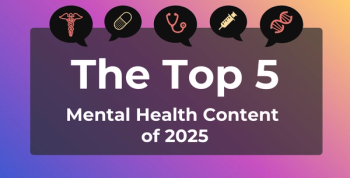
“Flipping the Script” to Reshape Access, Redefine Value in Oncology: Andrew Chapman, DO
"Value" in oncology should measure far more than clinical outcomes, stated Andrew Chapman, DO, as he argued how rethinking "value" could not only enhance patient care but also drive down costs.
Oncologists and health systems need to rethink what “value” entails in their practice, argued Andrew Chapman, DO, FACP, director, Sidney Kimmel Comprehensive Cancer Center, Jefferson Health. “Value” typically ties to clinical outcomes; however, thinking about “value” as a measure of health care access and the quality of care afforded to patients may prove useful for addressing high costs.
In this interview with The American Journal of Managed Care®, Chapman discussed the impact of supportive oncology approaches for evaluating value in
These topics, the influence of value-based care models, and more, were explored at a recent
This transcript has been lightly edited; captions were auto-generated.
Transcript
In an era of increasingly personalized and costly care, how can ‘value’ be defined beyond clinical endpoints—especially from the patient perspective?
Traditionally, “value” has been defined as you stay there by clinical endpoints, whether it's ER visits, hospitalizations, or the ICU. What we really need to do is flip the script and think about things from the standpoint of quality and access. Those things are really going to resonate very much with patients.
The average patient, what they're looking for, is that outcome in terms of treatment, of what their disease is, and doing that at the lowest cost. I think that there's ways in which we can create both access and quality in such a way that we could actually drive down cost.
How can payers and policymakers strike a balance between incentivizing innovation and ensuring affordable health care access?
I'll go back to the point about flipping the script. And I think that there's ways in which to address quality and access in such a way that it creates cost savings. Examples of this would be utilizing supportive oncology measures and incentivizing the use of these supportive oncology measures because they clearly have been shown to improve the quality of care and to lower cost. A great example would be navigation and paying for navigation, because that can lead to early intervention, which can prevent costly hospitalizations or ER visits. I think that that flipping of the script to look at quality and access will be very meaningful to the patient population, and as a result of doing this, well, ideally, we would be able to drive down cost while literally bringing innovation into the way that care is delivered.
What role should real-world evidence play in shaping value assessments in oncology, particularly when clinical trial data don’t always span diverse or underserved populations?
I think that's a really important question, because as you're trying to develop these value-based models we have to understand that the patient population is so diverse. Without real-world data, you're not going to be able to generate something that is going to be applicable to the large majority of patients who are being treated for a particular disease. And as such, then that's not going to be a very effective model, certainly in the eyes of the patient, and to some extent, the hospitals and care delivery systems.
What metrics are proving most effective in capturing meaningful outcomes in value-based models, and where are current models falling short?
When we put cost at the forefront that's, to some extent, missing the message. I think we can drive down costs by using pathway concordance for care delivery is a good example. I think also, as I just mentioned, using the supportive care opportunities in terms of navigation is important. Practices have a tremendous amount of administrative burden because of preauthorizations and if care is concordant with guidelines, getting rid of that administrative overhead would not only help to reduce aggravation, but also potentially the cost of care. And in conjunction with that, what that does is it increases patient and provider satisfaction. Maybe some of the things that we should be measuring are patient satisfaction and how do they feel about the care that they're receiving. There are a lot of opportunities, but it means putting these innovative mechanisms in place, which ultimately are meant to lower costs on the other side.
Newsletter
Stay ahead of policy, cost, and value—subscribe to AJMC for expert insights at the intersection of clinical care and health economics.







































